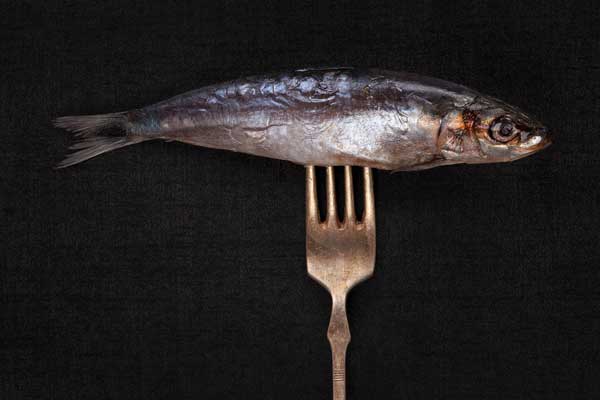Fish is often touted as one of the healthiest foods you can eat, packed with omega-3, protein, and essential nutrients. However, not all fish is equal, and choosing the wrong fish can actually do more harm than good. In this article, we’ll dive into 7 kinds of fish you should avoid for better heart health, as well as some of the best fish options to include in your diet.

Tilapia
Tilapia is one of the most popular fish in the United States. However, there’s one key reason to think twice about eating tilapia: its omega-6 to omega-3 ratio. Omega-6 and omega-3 are essential fatty acids that the body needs. However, too much omega-6 and not enough omega-3 leads to inflammation, high blood pressure, and increased heart disease risk. Unfortunately, tilapia is high in omega-6 and low in omega-3. In fact, tilapia has one of the worst omega-6 to omega-3 ratios of any fish.
Even more alarming, imported tilapia often falls short of safety standards. The US FDA flagged a number of exporters for regularly sending tilapia with unacceptable levels of harmful chemicals. Some of these chemicals are used to control parasites in fish farms, however they can be carcinogenic and have been banned in many countries. Yet, some fish farmers continue to use them and sell under the radar. Similarly, imported tilapia may contain high levels of antibiotics. The overuse of antibiotics can lead to antibiotic-resistance, which is a growing problem in human health.
Instead of choosing tilapia, you can try some healthier options like wild-caught Alaskan salmon, Atlantic mackerel, and Pacific sardines.
King Mackerel
King Mackerel is one type of fish that you should avoid. One of the main concerns with king mackerel is high levels of mercury. Mercury is a toxic metal that accumulates, leading to serious health problems such as neurological damage, kidney problems, and developmental delays in children.
King mackerel is a predatory fish. That means it’s at the top of the food chain and consumes other fish. Because of this, they accumulate more toxins over time, such as PCBs and other toxins. Even if a chemical has been banned for decades, it can still persist in the environment and accumulate in the fatty tissues of these fish. Which is why King Mackerel should be avoided.
Other types of mackerel, such as Atlantic mackerel and Atka mackerel, are lower in mercury and higher in inflammation-fighting omega-3 fats.
Orange Roughy
This “slimehead” can live up to a whopping 150 years. They don’t mature until around 30 years old, so if you choose this fish, you’ll likely be eating a 30-year-old fish that has accumulated toxins over those years. This can lead to higher levels of mercury and other harmful toxins in your body.
Instead of Orange Roughy, try some other options like Pacific cod, Alaskan salmon, and rainbow trout.
Swordfish
Swordfish is another type of fish that should be avoided due to its high levels of mercury. It’s a large fish that consumes a lot of smaller fish, which means that it can accumulate more toxins over time. In addition, swordfish is often caught using longlines, which can also harm other marine life such as sea turtles and sharks.
If you want a similar-tasting fish without the health risks and environmental impact, try mahi-mahi or trout instead.
Shark
Shark meat should be avoided due to its high levels of mercury and other toxins. Sharks are apex predators, which means that they consume other fish and accumulate more toxins over time. In addition, shark populations are already threatened due to overfishing, so choosing a different fish option can help protect the species.
Atlantic Bluefin Tuna
Atlantic Bluefin Tuna is a popular fish that is often used in sushi and sashimi dishes. However, due to its high levels of mercury, it should be avoided. In addition to mercury, Atlantic Bluefin Tuna also contains high levels of PCBs, which are toxic chemicals that have been linked to cancer, neurological problems, and other health issues.
Bluefin Tuna are large and long-lived fish, which means they accumulate toxins over time. They are also overfished, which makes them an unsustainable choice. If you’re looking for a healthy tuna alternative, consider Albacore Tuna, which is lower in mercury and higher in omega-3s.
Tuna
Tuna is a staple in many households due to its versatility and taste. However, not all tuna is created equal. Some types of tuna, such as bluefin and bigeye tuna, contain high levels of mercury and should be avoided. These types of tuna are often used in sushi and sashimi dishes.
On the other hand, skipjack and albacore tuna are lower in mercury and considered safer options. According to the EDF, canned light tuna is the safest and most sustainable option for tuna consumption. It is important to note that pregnant women, nursing mothers, and young children should limit their consumption of canned tuna to no more than two servings per week.
Conclusion
Fish is a healthy and nutritious food that can provide numerous health benefits. However, not all fish is created equal. Certain types of fish, such as tilapia, king mackerel, orange roughy, shark, swordfish, and certain types of tuna, should be avoided due to their high levels of mercury and other harmful toxins.
To minimize your exposure to harmful substances, it is important to choose sustainable seafood options and consume fish that are lower on the food chain. Additionally, pregnant women, nursing mothers, and young children should limit their consumption of certain types of fish to avoid potential health risks.
By making informed choices about the fish you eat, you can enjoy the many health benefits of seafood while minimizing your exposure to harmful substances.
